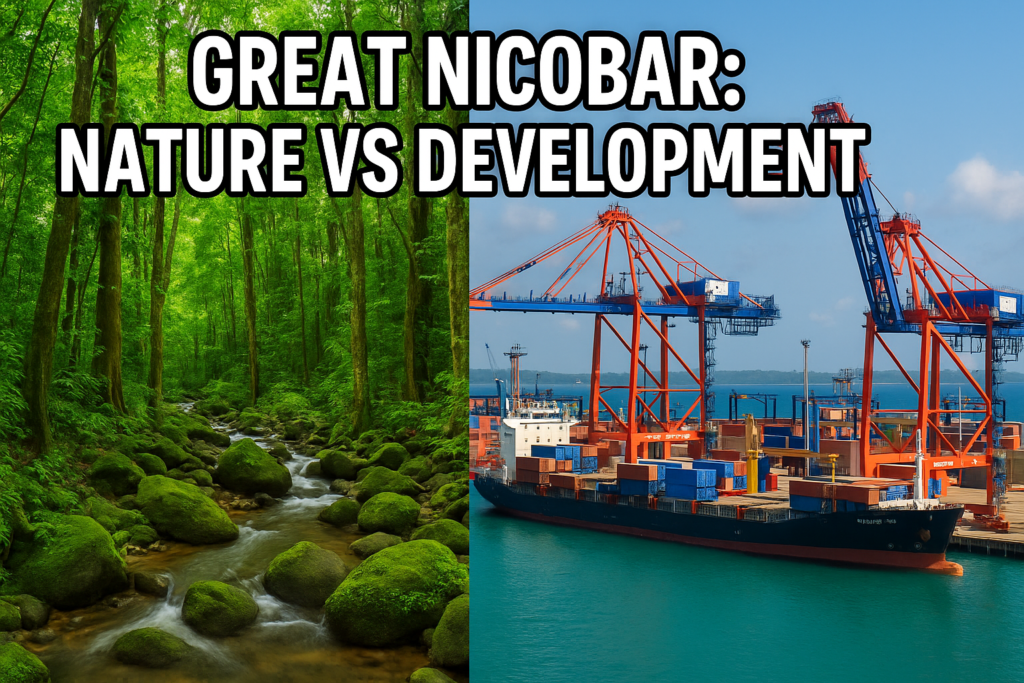
Key Highlights
- ₹72,000 crore mega project threatens 300 Shompen tribe members and pristine Sundaland biodiversity hotspot
- Located in Seismic Zone V with 420-750 year return period for mega earthquakes, EIA downplays tsunami risks
- Project violates UNDRIP, Forest Rights Act, and tribal consent principles with 8,000% population increase planned
- Strategic importance for Indo-Pacific dominance and countering China’s Belt Road Initiative in Indian Ocean
- NGT review reveals coral reef destruction, 10 million trees felling, and inadequate environmental safeguards
Understanding the Great Nicobar Mega Project
Project Overview and Scope
The Great Nicobar Infrastructure Project (GNIP), conceived by NITI Aayog in 2021, encompasses comprehensive development across 130.75 square kilometers of pristine island territory. The project includes:impriindia
Core Infrastructure Components:
- International Container Transshipment Terminal at Galathea Bay with 16 million TEU capacity
- Greenfield international airport with dual military-civilian functions
- 450 MVA gas and solar-based power plant for energy security
- Two greenfield coastal cities accommodating up to 650,000 settlers
Additional Facilities:
- Cruise ship terminal and luxury tourism resorts
- Industrial hub and export-import facilities
- Defense installations and strategic military infrastructure
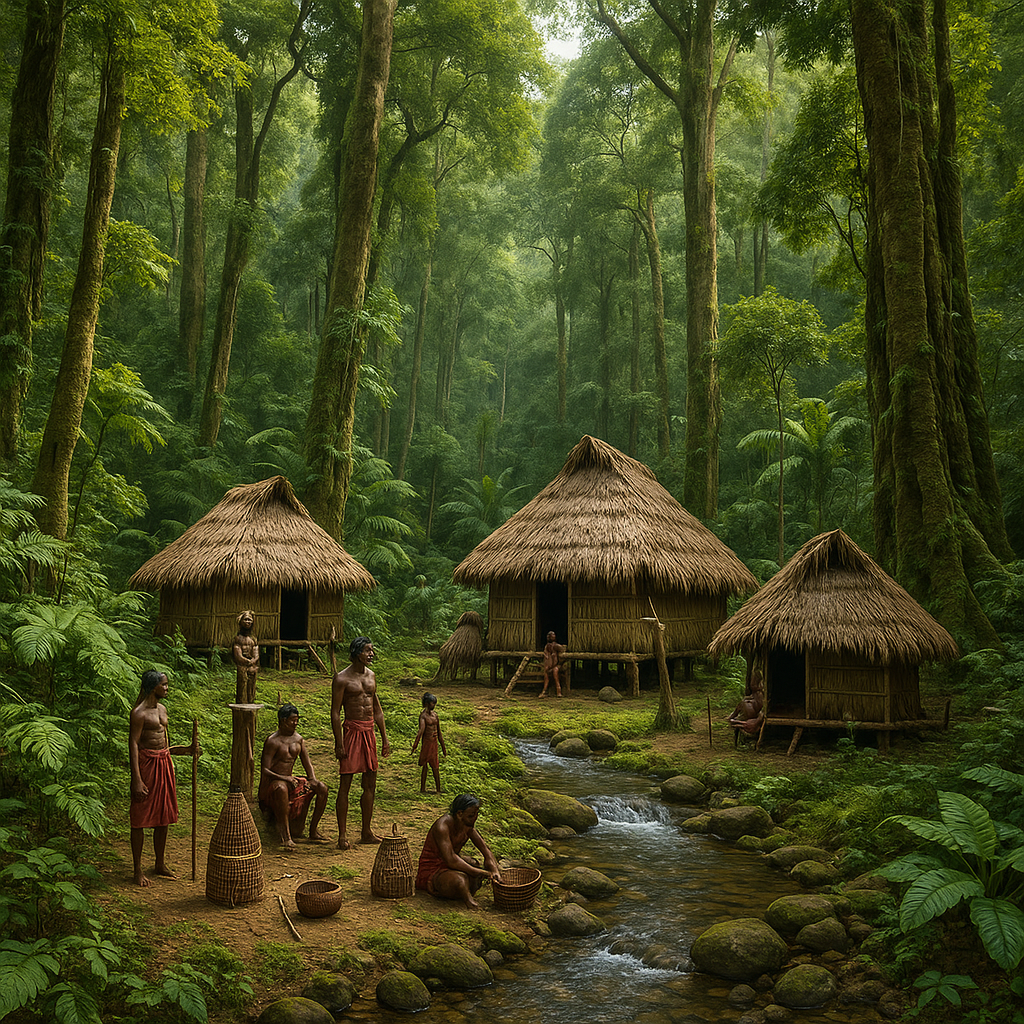
The Andaman and Nicobar Islands Integrated Development Corporation (ANIIDCO) serves as the nodal agency, with the Ministry of Ports, Shipping and Waterways overseeing the transshipment terminal development.
Strategic Importance in Indo-Pacific Context
Geopolitical Positioning:
Great Nicobar Island’s location provides strategic oversight of critical maritime chokepoints in the Indo-Pacific region. indicrf
Maritime Dominance:
- Proximity to Malacca Strait: Controls 25% of global trade worth $3.4 trillion annually
- Monitoring Chinese Naval Activity: Counters Belt Road Initiative expansion in Indian Ocean
- QUAD Alliance Support: Strengthens India-US-Japan-Australia maritime cooperation
Blue Economy Integration:
The project aligns with India’s Maritime India Vision 2030 and SAGAR doctrine (Security and Growth for All in Region).
Economic Objectives:
- Reduce dependency on Singapore and Colombo ports for transshipment
- Boost trade competitiveness by accommodating Ultra Large Container Vessels
- Create employment and industrial development opportunities
Ecological and Environmental Crisis
Biodiversity Hotspot Under Threat
Great Nicobar Island forms part of the Sundaland Biodiversity Hotspot, harboring unique ecosystems developed over millions of years.
Forest Ecosystem Destruction:
- 10 million trees face felling (revised from initial estimate of 9.64 lakh)
- 130 square kilometers of primary tropical rainforest to be cleared
- Habitat fragmentation threatens endemic species survival
Marine Ecosystem Impact:
Galathea Bay Wildlife Sanctuary, designated for marine turtle conservation in 1997, was denotified in 2021 to facilitate port development. india.mongabay
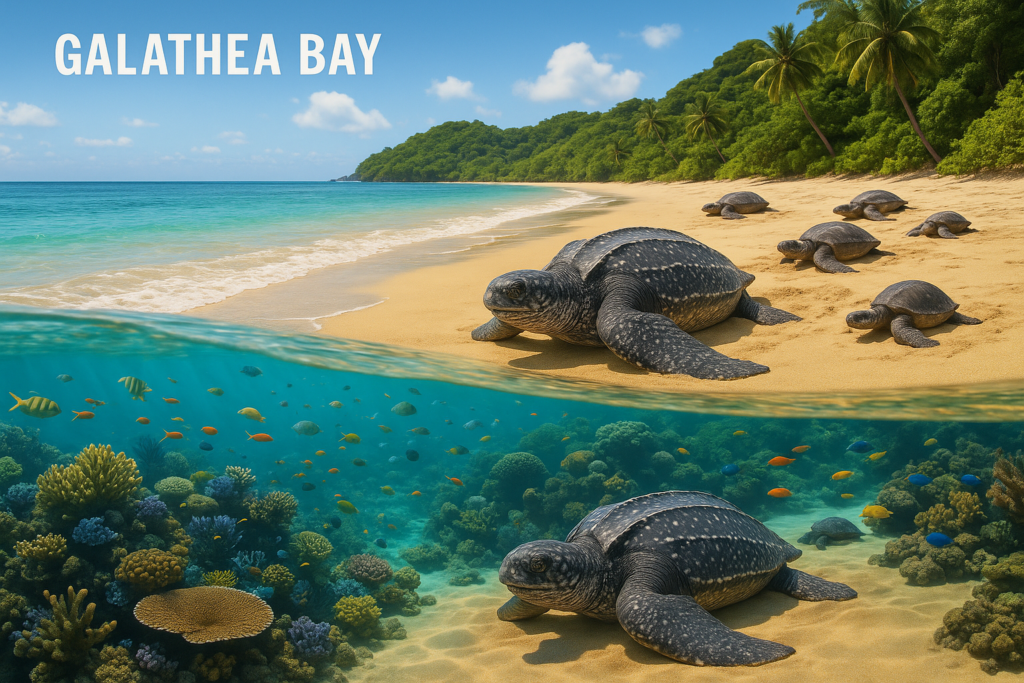
Critical Species at Risk:
- Leatherback sea turtles: Global nesting site at Galathea Bay threatened
- Nicobar megapode: Endemic bird species facing habitat loss
- Saltwater crocodiles: Mangrove destruction affects breeding grounds
- Coral reef systems: 16,150 colonies require translocation
Seismic Vulnerability and Climate Risks
Earthquake and Tsunami Threats:
The region lies in Seismic Zone V, India’s highest earthquake vulnerability category.
Scientific Evidence:
- 2004 Indian Ocean Tsunami: Magnitude 9.2 earthquake killed over 10,000 Indians
- IIT-Kanpur Study (2019): 420-750 year return period for magnitude 9+ earthquakes
- Geological Instability: Indian Plate subduction beneath Burmese Microplate
EIA Shortcomings:
The 900-page Environmental Impact Assessment prepared by Vimta Labs has been criticized for downplaying seismic risks despite scientific evidence.
Missing Elements:
- Site-specific seismic studies not conducted
- Tsunami modeling inadequately addressed
- Climate change vulnerability assessment incomplete
Social and Indigenous Rights Concerns
Shompen Tribe: World’s Last Isolated Community
The Shompen people, numbering approximately 300 individuals, represent one of Earth’s most isolated communities. e360.yale
Cultural Significance:
- Particularly Vulnerable Tribal Group (PVTG) status under Indian law
- Hunter-gatherer lifestyle maintained for thousands of years
- Semi-nomadic existence in forest territories identified by rivers
Threats to Survival:
- Disease vulnerability: No immunity to mainland diseases
- Habitat destruction: Forest clearing eliminates traditional territories
- Population pressure: 8,000% increase from 650,000 new settlers
Nicobarese Community Displacement
The Nicobarese people, with approximately 1,200 residents in Great Nicobar, face second displacement after 2004 tsunami relocation.
Land Rights Violations:
- Traditional villages including Chingenh, Kirasis, and Kurchinom face acquisition
- 84 square kilometers of tribal reserve to be denotified
- Ancestral territories mapped by researcher Manish Chandi remain unrecognized officially
Constitutional and Legal Violations:
UNDRIP Obligations:
India voted in favor of the United Nations Declaration on the Rights of Indigenous Peoples in 2007, creating binding international obligations.
Key Violations:
- Free, Prior, and Informed Consent: Not obtained from affected communities
- Self-determination rights: Tribal autonomy ignored in project planning
- Cultural preservation: Traditional territories face irreversible destruction
Domestic Law Contraventions:
Forest Rights Act (FRA) 2006:
- Section 4(5): Prohibits eviction until forest rights verification complete tribal.nic
- Community forest rights: Traditional resource access eliminated
- Gram Sabha authority: Village-level decision-making bypassed
Governance and Legal Framework Challenges
Environmental Clearance Controversies
Flawed Assessment Process:
The Environmental Impact Assessment process faced significant procedural irregularities.
Key Deficiencies:
- Limited baseline data: One-season environmental survey deemed insufficient
- Coastal zone misclassification: Initial claims of ICRZ-1A zone later changed to ICRZ-1B
- Coral reef underestimation: Scattered reefs existence initially denied
National Green Tribunal Intervention:
The NGT formed a High-Powered Committee in April 2023 to reassess environmental clearance due to procedural violations.
HPC Findings:
- Coastal zone reclassification: Confirmed ICRZ-1B status allowing port development
- Coral translocation: Recommended for 16,150 colonies with further studies for remaining 4,518
- Confidentiality concerns: HPC meeting minutes withheld citing strategic importance
Coastal Regulation Zone Violations
CRZ Framework:
The Coastal Regulation Zone Notification 2019 provides regulatory framework for coastal development.
Zone Classifications:
- CRZ-I: Ecologically sensitive areas requiring maximum protection
- CRZ-IA: Mangroves, coral reefs, no development permitted
- CRZ-IB: Intertidal areas, limited foreshore facilities allowed
Project Compliance Issues:
- Zone manipulation: Reclassification from CRZ-IA to CRZ-IB enables development
- Marine ecosystem impact: Port dredging threatens turtle nesting sites
- Compensatory measures: Coral translocation remains scientifically unproven
Strategic vs Sustainable Development Debate
National Security Imperatives
Indo-Pacific Strategy:
India’s Act East Policy and QUAD engagement necessitate enhanced maritime capabilities in response to Chinese expansion.
Defense Priorities:
- Naval base establishment: Monitoring South China Sea activities
- Strategic asset protection: Securing sea lanes of communication cuts-global
- Regional deterrence: Countering Chinese infrastructure investments
Economic Competitiveness:
Trade Hub Development:
- Transshipment capacity: Reducing cargo costs by 30-40%
- Industrial corridor: Linking India-Middle East-Europe Economic Corridor
- Employment generation: Creating maritime sector jobs
Alternative Development Models
Sustainable Alternatives:
Eco-tourism Development:
- Marine research stations: Scientific value addition
- Community-based tourism: Tribal participation in economic activities
- Renewable energy hubs: Solar and wind power without habitat destruction
Integrated Conservation:
- Marine protected areas: Enhanced ecosystem services
- Carbon sequestration: Forest conservation for climate mitigation
- Sustainable fisheries: Community resource management
International Law and Human Rights Framework
UNDRIP Implementation Challenges
Global Standards:
The United Nations Declaration on the Rights of Indigenous Peoples establishes minimum standards for indigenous community treatment.
Core Principles:
- Self-determination: Right to determine political status and development
- Free, prior, informed consent: Mandatory consultation before projects affecting territories
- Cultural preservation: Protection of traditional ways of life
India’s Position:
India supported UNDRIP adoption but maintains all Indians are indigenous post-independence, creating implementation ambiguities.
Legal Obligations:
- Constitutional provisions: Articles 21 (life and liberty) and 338A (tribal welfare)
- Scheduled Tribes status: Special protection under Fifth and Sixth Schedules
- International treaty obligations: Binding commitments under UNDRIP ratification
PESA and Tribal Self-Governance
Panchayat Extension to Scheduled Areas Act (PESA) 1996:
PESA grants enhanced autonomy to tribal communities in scheduled areas.
Key Provisions:
- Gram Sabha authority: Village assemblies decide local development
- Resource control: Community rights over minor forest produce
- Prior consultation: Mandatory tribal consent for land acquisition
Great Nicobar Violations:
- Bypassed consultation: Gram Sabha decisions ignored
- Resource alienation: Traditional territories acquired without consent
- Cultural disruption: Sacred sites and traditional practices threatened
Way Forward: Balancing Development and Rights
Integrated Planning Approaches
Sustainable Development Goals:
SDG Alignment:
- SDG 14 (Life Below Water): Marine ecosystem protection
- SDG 15 (Life on Land): Terrestrial biodiversity conservation
- SDG 16 (Peace and Justice): Indigenous rights protection
Multi-stakeholder Engagement:
Inclusive Consultation:
- Tribal community participation: Meaningful involvement in decision-making
- Scientific community input: Evidence-based environmental assessment
- Civil society engagement: Human rights monitoring and advocacy
Technology and Innovation Solutions
Climate-Resilient Infrastructure:
Seismic Safety:
- Advanced earthquake monitoring: Real-time hazard assessment systems
- Tsunami early warning: Community-based disaster preparedness
- Resilient construction: Earthquake-resistant building technologies
Green Technology Integration:
- Renewable energy systems: Solar and wind power for port operations
- Waste treatment facilities: Marine pollution prevention technologies
- Ecosystem restoration: Scientific coral reef rehabilitation programs
Legal and Institutional Reforms
Strengthened Governance:
Environmental Safeguards:
- Independent monitoring: Third-party environmental compliance assessment
- Adaptive management: Responsive project modification based on monitoring results
- Transparency mechanisms: Public access to environmental data and decisions
Rights Protection:
- Tribal consent protocols: Standardized free, prior, informed consent procedures
- Cultural preservation: Sacred site protection and traditional practice continuation
- Benefit sharing: Equitable distribution of development benefits
The Great Nicobar Project represents a critical juncture in India’s development trajectory, where strategic imperatives collide with ecological preservation and indigenous rights. While the project’s importance for Indo-Pacific maritime security cannot be understated, the potential extinction of the Shompen tribe and irreversible environmental damage demand careful reconsideration.
The path forward requires innovative solutions that honor both national security needs and constitutional obligations to protect vulnerable communities. Sustainable alternatives, enhanced consultation processes, and climate-resilient infrastructure can potentially reconcile competing demands.
As India aspires to become a responsible Indo-Pacific power, the Great Nicobar decision will define whether development and ecological justice can coexist in the 21st century. The voices of 300 Shompen people and millions of years of evolution hang in the balance.
📝 Possible Mains Questions
- The Great Nicobar Island Project highlights the “development vs. ecological justice” dilemma. Critically analyze.
- Discuss the strategic importance of the Great Nicobar Island Project in the Indo-Pacific and evaluate its ecological and social implications.

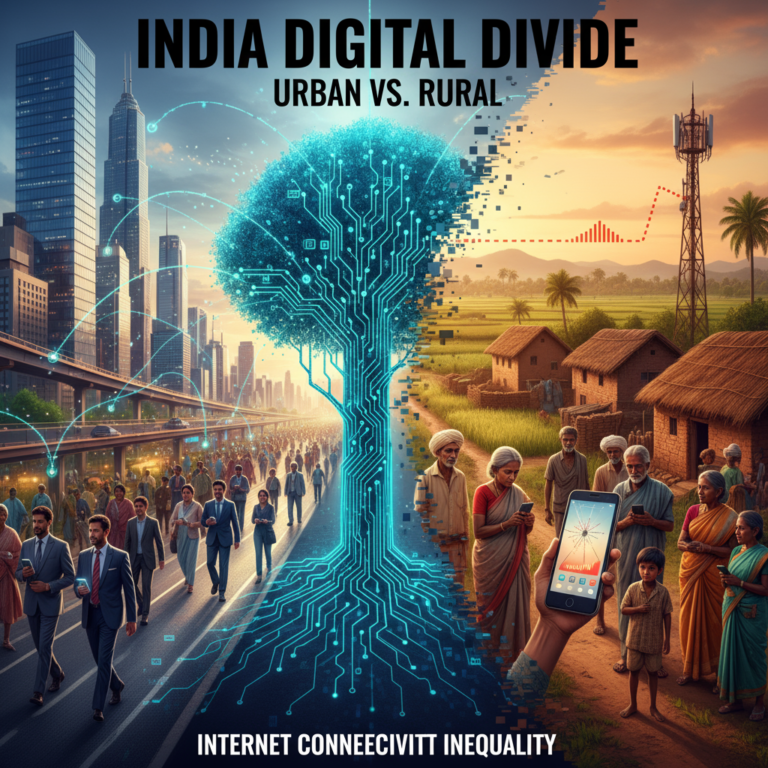



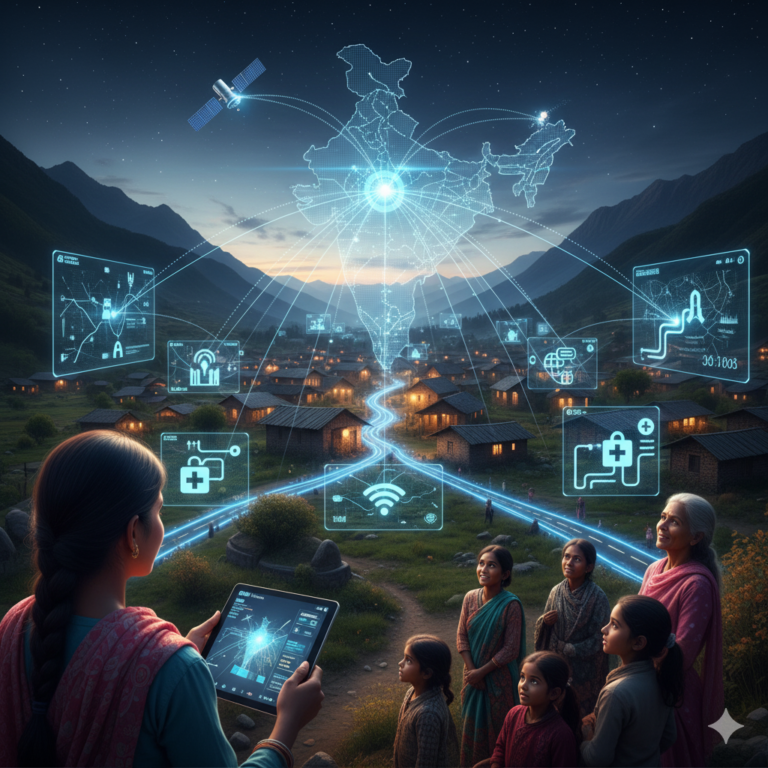
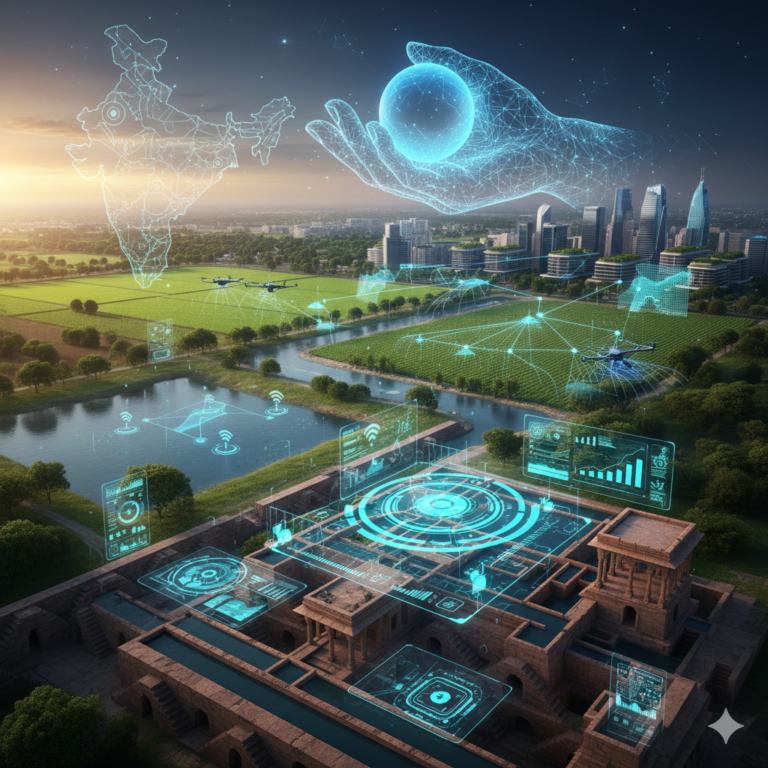
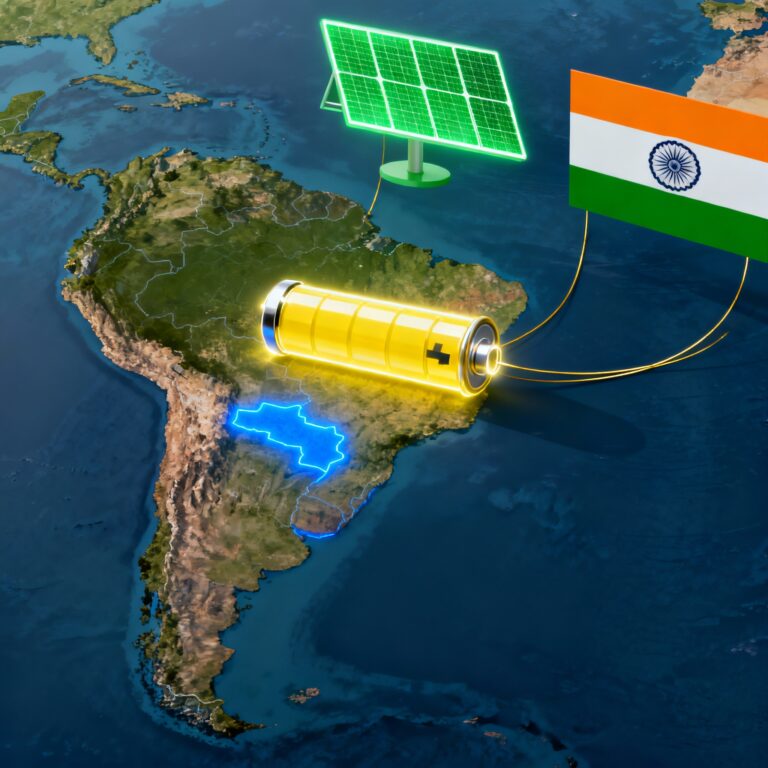
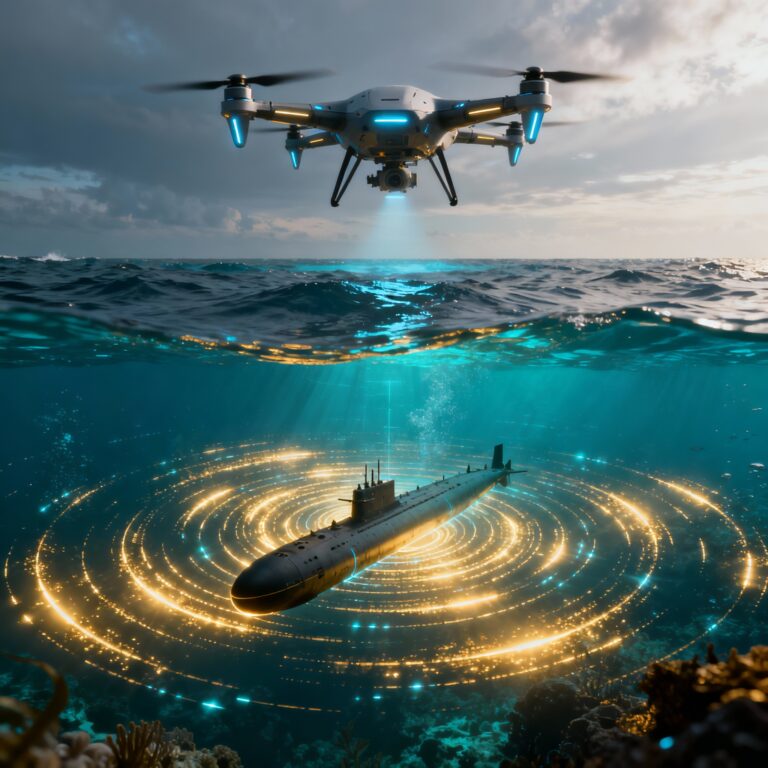
+ There are no comments
Add yours